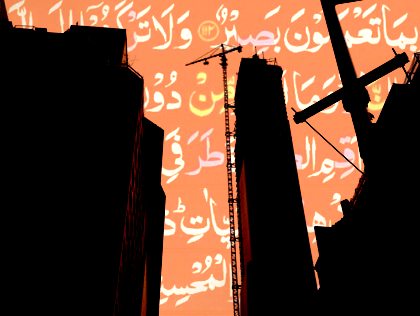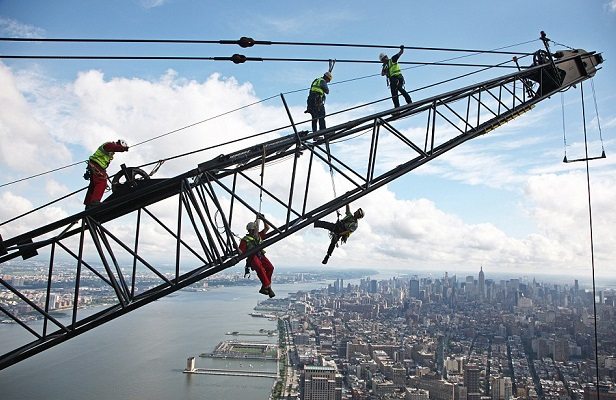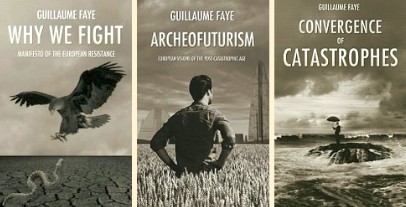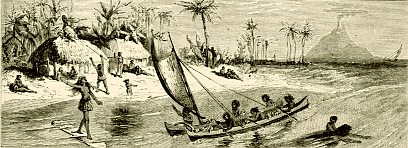The latest work of fiction by Matthew Bracken will appear here in several installments. Part One was published earlier today in a slightly different form at Western Rifle Shooters Association.

Piss Christ? Piss Koran!
Part One: Dark Till Dawn
by Matthew Bracken
Mike Dolan came out of the subway, hit the sidewalk and set out down the west side of 6th Avenue with a purposeful stride. Midtown Manhattan never truly sleeps, particularly just before a Monday morning, but compared to what it would be like in a couple of hours, it was geared way down. No tourists yet, mostly delivery trucks and vans. All lanes were northbound, because it was 6th Avenue.
Mike was showered and clean shaven, every item on him and in his possession carefully considered. The white hard hat on his head was the real deal. He wore a gray polo shirt with the embroidered black-and-yellow logo of a crane manufacturer above the pocket. Both items were gifts from old friends. The black cargo-pocket work pants over his Red Wing construction boots were practically new. An iPhone in an armored carrier was clipped to the black nylon rigger’s belt on his right hip. A silver tape measure was next to a small black flashlight on his left. On his back was a compact but heavy pack, also black. In his right hand he carried a small black tool bag, and he held a folding aluminum clipboard case in his left. On the F-Train over from Queens, another early riser had gestured toward Mike’s hard hat, and asked him if the strike was over. Mike just mumbled something about safety inspectors never getting a day off.
After a career spent pounding bolts hanging the high steel, it felt strange for him to be wearing a white hard hat for his trip into Manhattan. The white hard hat and the crane-logo polo shirt were just a disguise for his mission. Like his father before him, Mike was a union man, from the time he got out of the Army, until he’d retired a few years earlier. The New York Ironworkers Local Union 461 had carried him all the way through his family-raising years. Now, the kids were gone, and his wife had passed away.

Mike had always worn a scuffed-to-hell red hard hat with an American flag sticker on the front. Shiny white hard hats were for management pukes way down in the trailers, and for inspectors and reporters and a few other random assholes who would occasionally make an appearance at nose-bleed height. Well, maybe they weren’t all assholes. Some of them were pretty cool, like the construction company honcho who had given him the white hard hat right off his head on the job site parking lot, and offered Mike a salaried position with his big and growing company. That was a line Mike Dolan couldn’t cross—he’d be a union man until the day he died—but it was a welcome gesture. And now that white hard hat was on his head.
After walking a few city blocks south from the subway entrance, the black edge of the forty-story BCA building became visible across the avenue. The BCA building was one of Mike’s two targets, but it was not his destination. The black granite tower was the national headquarters of the BCA television network, including the studios of BCA World News. Another block down 6th, and Mike passed in front of another impressive skyscraper, the fifty-story Grand Hotel. Cabs were waiting under the portico; it was the usual scene remembered from a thousand pre-dawn trips into the city. Hustlers, pimps and low-lifes of every stripe, who were just ending their nights, passed worker bees trudging the other way toward their daily grinds.
While he was approaching 53rd Street, Mike looked around and counted at least four cameras. It didn’t matter. He knew he’d been on film from the time he’d gotten onto the subway. If his mission succeeded, his identity would probably be out anyway. The guy on the F-Train who had asked him about the strike would be giving TV interviews by the twelve o’clock news. So what? It wouldn’t change anything.
Mike’s destination was just across 53rd Street. The southwest corner of the intersection was the home of the forty-five story Bank of Europe building. The corner of the building was set far enough back from the street corner so that in normal times, there was enough space around its main street entrance for a plaza with a big statue, a fountain, and benches extending most of the way down 53rd. But not now. Now this extra space was blocked off from the public as a temporary construction site. Orange plastic barricades were set up along the 53rd Street side of the bank building, leaving only a narrow space near the curb for pedestrians. Just behind the line of orange barricades was a fence made of temporary chain-link sections covered with green fabric.
The barriers were there to keep people away from a tower crane that was being assembled on the 53rd street side of the bank building. Something big and heavy needed to be lifted 600 feet up to the roof, and the way they were going to get it up there was with a temporary crane. But the tower—and the horizontal hammerhead crane on top of it—were only halfway up the side of the bank building. The strike had stopped all Manhattan construction jobs last week. At this temporary work site, there would be no union members walking a picket line. The crane job was just shut down, and it would be forgotten until the dispute was settled, probably in a week or less.
After crossing 53rd, Mike turned right and walked along the line of orange barricades and fencing halfway to 7th Avenue, where they made a ninety-degree left turn and terminated against the side of the building. The dark fabric covering the fencing cast a shadow from the nearest street light across the plastic barricades. There was nobody in sight, so Mike casually swung his legs over the low barricade and went prone, disappearing in the gap between the orange plastic and the fencing. The fabric was just hanging loose at the bottom, easily pushed out of the way. Mike’s black tool bag was already unzipped. Heavy-duty wire cutters clipped the temporary joint where the galvanized pipes of the last two fence sections were sloppily wired together. He only needed to push their bottoms apart to slip through, and he was inside.
Behind the fencing there was little need for security, because there was nothing small or light enough for a thief to steal. Whatever had to be lifted to the roof would not arrive until the tower crane was fully assembled and ready, and it was only halfway up. The tower grew twelve feet at a time by pushing the top section up with the enormous hydraulic pumps in the jack-up climber unit up near the top, and then sticking in another tower section that had just been lifted up by the crane.
Most of the barricaded space along 53rd Street was taken up with the next half-dozen tower sections that would go up. Individually, they were giant yellow cubes made of four vertical load-bearing round pipes joined by a grid of horizontal and diagonal cross struts. Mike walked between these sections and the building, and went straight to the base of the tower. A steel hand ladder was welded to each section on the side nearest the building, which was twenty feet away. Crouching there the dark, Mike removed leather work gloves from his gym bag and put them on. The gym bag and his hinged aluminum clipboard went into his backpack, and when he slung it back on, this time he fastened the chest strap. His hard hat’s liner suspension was already tight enough for climbing.



